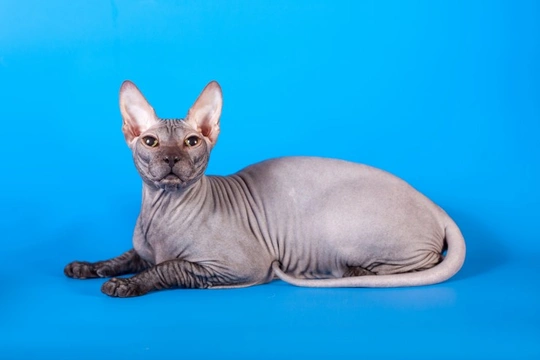
Caring for the unique and unusual Sphynx cat
The Sphynx cat is a very unusual and distinctive breed, largely due to the fact that they known as hairless cats. However, few cats of the breed are totally bald, and most have a very soft, fine covering of short, sparse down on their bodies, as well as potentially having whiskers too in some cases.
Not everyone is a big fan of the Sphynx cat’s unusual appearance and other qualities – but they do have a strong following of fans and enthusiasts, so much so that they are actually the UK’s sixth most popular cat breed overall.
As you might expect, the breed’s lack of a coat makes them different from other cats in many ways – including their care requirements, which is something that all potential Sphynx cat buyers should bear in mind.
If you are wondering if a Sphynx cat is the right choice for you, or are starting to research the breed with a view to buying one, it is important to learn about their unique care requirements before you commit to a purchase. In this article, we will examine the care requirements of the Sphynx cat breed in more detail. Read on to learn more.
The breed’s coat and skin
The texture of the Sphynx cat’s skin within the breed standard is described as feeling like chamois leather, and this is of course a very different texture to that of the average cat with fur!
It is a common misapprehension that the lack of fur means that the Sphynx is a zero-maintenance cat where grooming is concerned – and in fact, the truth of the matter is quite the opposite.
The skin of all cats produce natural oils, which help to keep the coat clean and healthy and provide some protection against the elements. The fur of the coat itself helps to distribute these oils from root to tip – but as the Sphynx cat doesn’t have fur, the oils stay on their skin, which left unchecked, can cause a greasy feeling to the skin as well as clogging the pores and leading to spots, rashes, and irritations.
This means that Sphynx cat owners need to bathe their cats very regularly – every week to fortnight on average. However, whilst most cats don’t like being in water and find it most distasteful, the lack of fur that the breed possesses negates this issue – and the vast majority of Sphynx cats are either very tolerant of being bathed, or actively enjoy it when performed with care.
The lack of fur also leads to other challenges within the breed that their owners need to manage carefully. The Sphinx cat cannot control their own body temperature as effectively as cats with fur, and so they are very prone to feeling the cold in the winter, and being in danger of developing sunburn in the summer.
Most Sphynx cats are kept as indoor-only pets to prevent this – and particularly, to reduce the risk of skin cancer within the breed, which can occur with regular or prolonged exposure to the sun without protection. Jumpers and coats are also used for Sphynx cats sometimes, to help to keep them warm and comfortable.
A stable, consistent temperature within the home year-round is important for Sphynx cats, as is providing a varied and interesting lifestyle to keep them happy and occupied when kept indoors.
Other care considerations for the Sphynx cat
The lack of hair on the body also means that Sphynx cats have very little hair (if any) within their ears – which tend to be large and pointed. This lack of ear hair – known as “ lack of ear furnishings” within the cat fancy – means that dust, grit, and debris are more likely to work their way into the cat’s ears. They also tend to accumulate more ear wax than most cats, and so when the cat is bathed weekly to fortnightly, the ears must also be carefully cleaned beforehand, as well as the body.
The cat’s claws and the skin folds over the sheaths of their claws also tend to build up sebum or skin oil as well as dirt and grit, so special attention should be paid to checking and cleaning these areas too.
Sphynx kittens and acclimatisation
Whilst most pedigree kittens are ready to go to their new homes once they reach twelve weeks of age, for Sphynx kittens, the accepted standard norm is rather longer at fourteen weeks, or even a little more.
This is because going onto their new home is the first time that kittens of the breed will leave the environment that they have become acclimatised to from birth, in terms of humidity and temperature. Younger kittens are at risk of developing respiratory infections if rehomed too young, as a result of the change in temperature and humidity that comes from moving to a new home.
In order to prevent this, ensure that any kitten you are considering buying is at least fourteen weeks old, and try to keep their temperature consistent throughout the journey itself, and while they get used to their new home.



